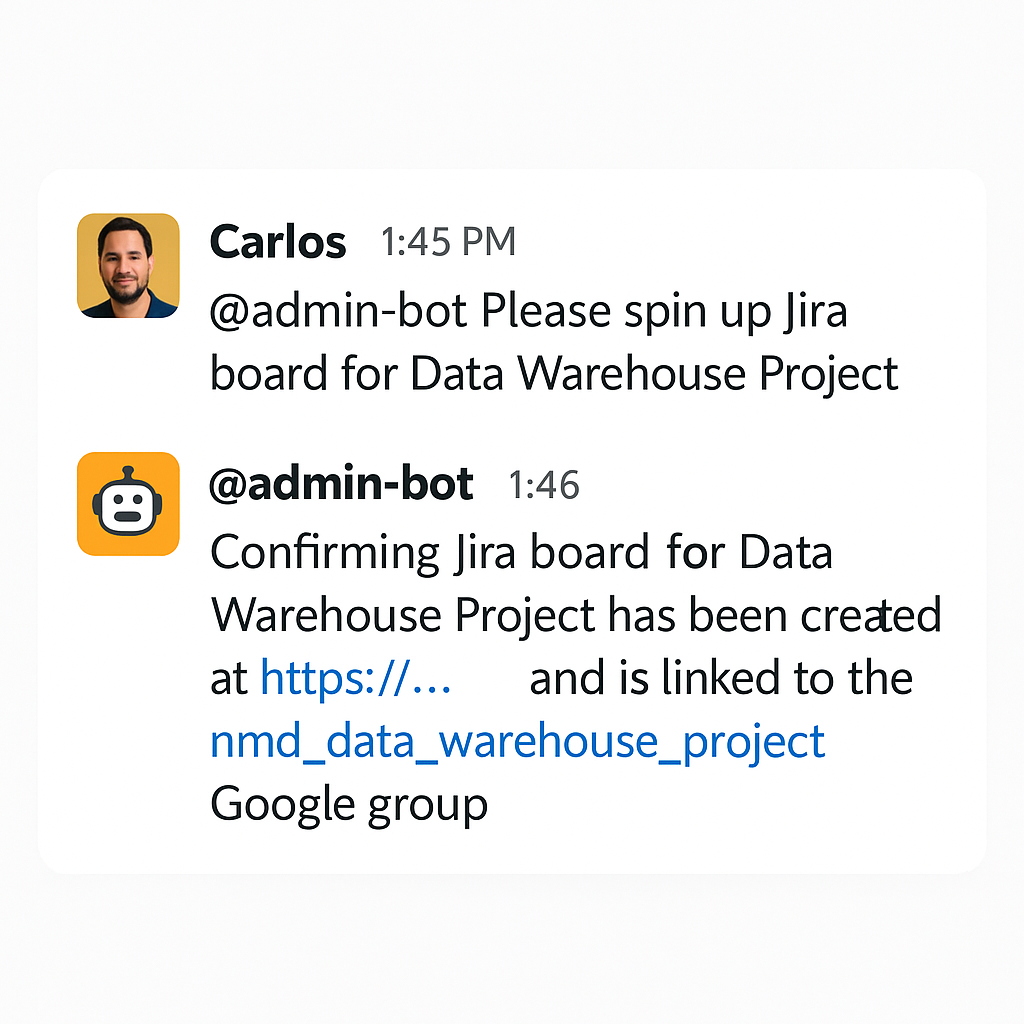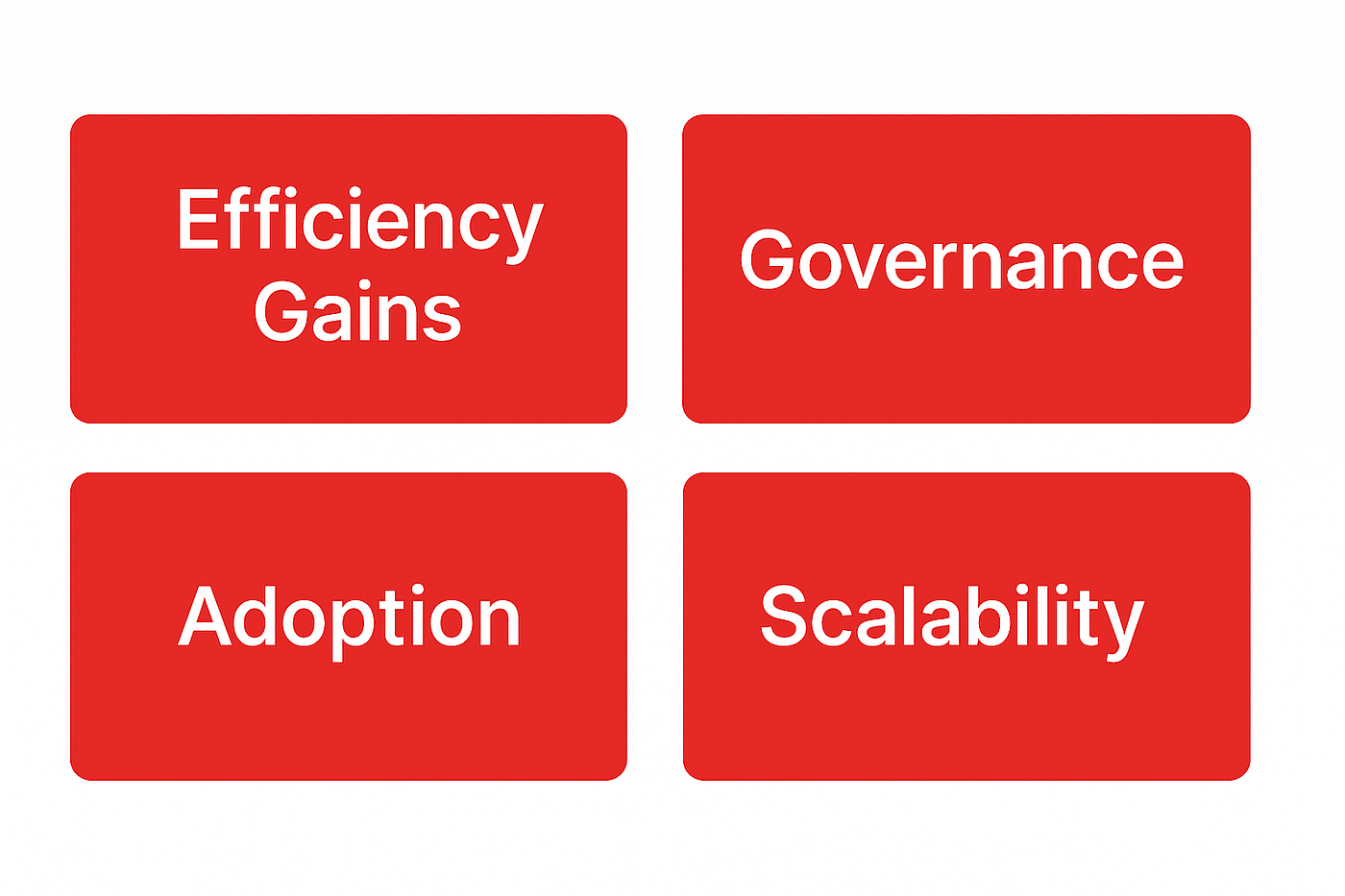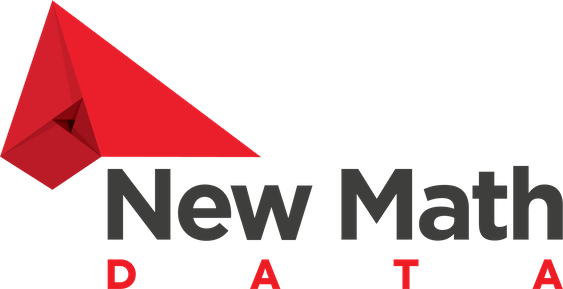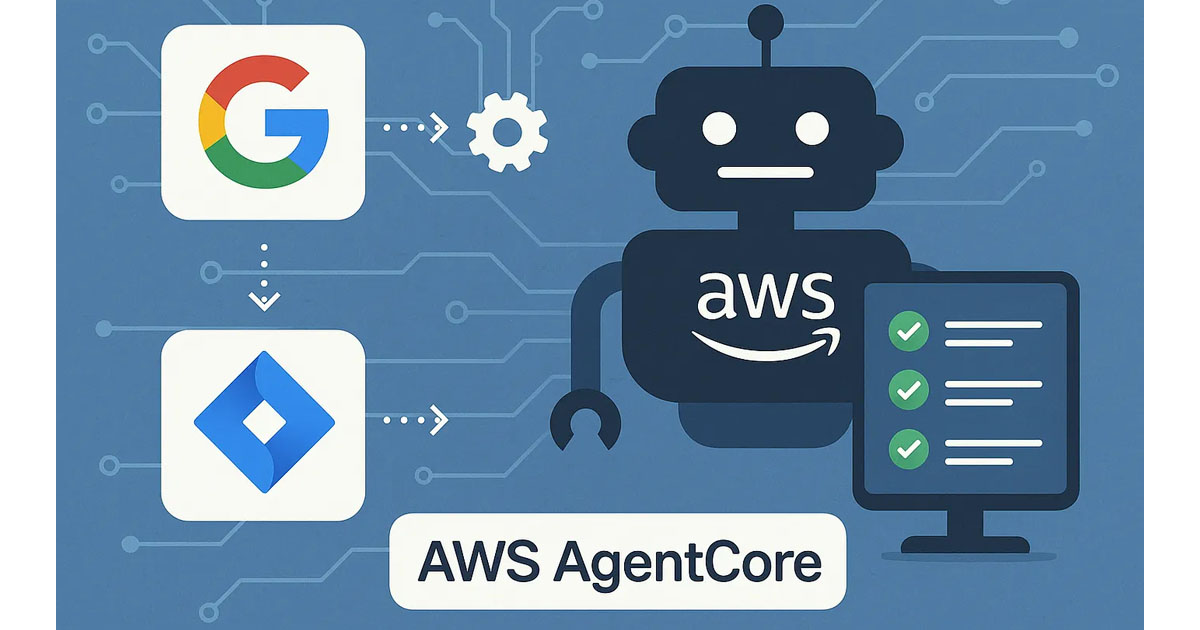Executive Summary
Administrative tasks in Google Workspace and Jira have consumed hundreds of staff hours for our team each quarter. These tasks — ranging from user provisioning to project setup — were repetitive, error-prone, and often delayed due to backlogs. By building a Slack-first automation interface powered by AWS AgentCore primitives (Gateway, Memory, Identity), we achieved a 90% reduction in admin time for common requests, while maintaining Human-in-the-Loop (HITL) safeguards for sensitive tasks.
In this article, we talk a lot about “end users”. That is largely development teams, but it can also include product stakeholders.
The Challenge
We are blessed to be busy with a high volume of projects, which has resulted in a corresponding increase in requests for Jira and Google Workplace setup tasks. The necessary tasks have largely mirrored each other. However, throughput was below the desired pace, and without human intervention, the process relied on human intervention to avoid compliance risk.
High Volume of Requests
- Google Workspace tasks include group creation and membership management, calendar creation, and folder setup.
- Jira tasks include project creation, board setup, workflow changes, and role adjustments.
Slow Turnaround
- Requests were often routed through tickets, delaying project execution by hours or days.
- End users lacked visibility into status, leading to follow-ups and work interruptions.
Compliance Risk
- Sensitive changes, such as permission escalations and account deletion, could not be safely automated without putting controls in place.
The Solution
Our solution combined a solid foundation built with some great new AgentCore capabilities, a Slack-first interaction to initiate workflows, and human-in-the-loop workflow automation for more sensitive operations.
AgentCore Foundation
- Gateway: Using the new Amazon Bedrock AgentCore Gateway, we built a unified API layer to receive Slack commands, route them to Google or Jira integrations, and manage workflows.
- Identity: With AgentCore Identity, we have built in least-privilege execution by mapping Slack users to defined identities. Only properly authorized users can initiate workflows. AgentCore Identity also ensures that agents or tools access resources under tightly controlled credentials, so access is granted only as needed for specific tasks.
- Memory: AgentCore Memory allowed us to preserve conversation context, such as who requested what, reusable templates, and recurring requests, in order to streamline repeated workflows and maintain a full, auditable history.
Slack-First Interaction
By implementing a Slack-first interaction, we create simple, natural commands to initiate workflows such as:
@admin-bot create Jira board for Team Phoenix
This real-time feedback in Slack threads helped keep users informed about task progress, which in turn streamlined team communication. Additionally, HITL triggers prompt approvers inline when sensitive actions are requested.
HITL triggers for sensitive operations were:
- Automated for routine, low-risk tasks such as group additions and removals.
- Escalated for approval when performing sensitive actions, such as deleting a user account or granting Jira admin rights.
- Logged to maintain a complete audit trail for compliance.
Results
The results were profound, including:
- 90% reduction in time spent on routine admin tasks.
- Turnaround improvement: requests that previously took 2–4 hours are now fulfilled in under 10 minutes.
- Error reduction: standardized automation eliminated common misconfigurations.
- Employee satisfaction: Slack-native experience made it easier for end users to self-serve without waiting for admins.
Example Workflows
Onboarding
A sample onboarding flow based on the integrations might look as follows:

Project Setup
If you want to setup a Jira board for a project, the commuication night look as follows. After asking the @admin-bot to spin up a Jira board, the system will apply template workflows and link with the relevant Google Group and respond when that is complete.

Group Management
Our AgentCore-based product can also be used to add or remove users from Google Groups with single-line Slack commands AND include HITL approvals if the group has privileged access (e.g., Finance, Security).
Organizational Impact

By automating routine tasks, we dramatically reduced the admin backlog and freed IT teams to focus on strategic, high-impact initiatives that drive innovation. Human-in-the-loop checkpoints strengthened governance, improving our compliance posture and keeping us audit-ready at all times. A seamless, Slack-native user experience made adoption effortless, empowering teams to engage with confidence and requiring minimal training. Most importantly, this architecture isn’t just a solution for today; it’s a foundation for tomorrow, ready to scale to Confluence, ServiceNow, and beyond, unlocking even more possibilities for efficiency and impact across the organization.
Lessons Learned
While this was a wildly successful project that will save us hundreds of man-hours each quarter, which showed the power of well-thought-out and carefully implemented AI projects, we had a few important learnings:
- Scope automation carefully: not every task should be fully automated; risk-aware design builds trust.
- UX matters: a Slack-first design drove adoption faster than expected.
- Visibility is key: logging and real-time Slack feedback reduced the “black hole” effect of admin requests.
Next Steps
This project is just the beginning of what’s possible. The same architecture can easily extend automation to Confluence and ServiceNow, integrate with HR systems to trigger seamless onboarding and offboarding, and power analytics dashboards that measure SLA compliance and pinpoint bottlenecks before they become roadblocks. Looking ahead, we’re excited to explore generative AI copilots that empower admins to design new workflows on the fly — turning IT from a support function into a true innovation engine. If you’re ready to unlock this level of efficiency, compliance, and creativity in your own organization, now is the time to start building.
We’d love to hear how you’re approaching automation and workflow orchestration in your organization. Drop a comment below, share your successes or challenges, or reach out to us at New Math Data directly! We’re always eager to swap ideas and help you unlock new levels of efficiency, compliance, and creativity.

